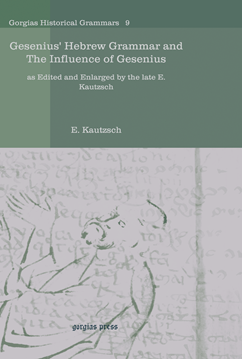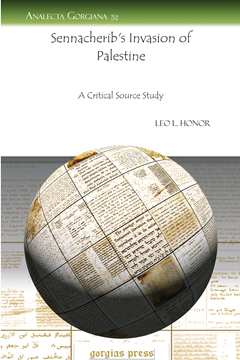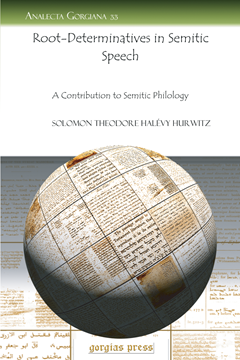Gesenius' Hebrew Grammar and The Influence of Gesenius
as Edited and Enlarged by the late E. Kautzsch
By E. Kautzsch
Series: Kiraz Historical Grammars Archive 9
ISBN: 978-1-59333-623-3
Gesenius’ Hebrew Grammar is an essential reference tool for any student of classical Hebrew. Apart from the thorough explanation given to each aspect of grammar and syntax, this volume contains an exhaustive scriptural index which leads the user directly to passages that stand as examples of difficult constructions. A full paradigm of the Hebrew verb is also included.
$260.00 (USD) $156.00 (USD)
Sumerian Hymns from Cuneiform Texts in the British Museum
Transliteration, Translation and Commentary
Series: Analecta Gorgiana 30
ISBN: 978-1-59333-624-0
Vanderburgh’s noted study of the Sumerian hymns to Bel, Sin, Adad, and Tammuz in the British Museum is an excellent example of one of the early attempts to grapple with the difficulties of the Sumerian language. Each hymn is presented in transliteration and translation, and these are accompanied by the author’s own commentary.
$53.00 (USD) $31.80 (USD)
Muslim Law of Marriage and Divorce
By Ahmed Shukri
Series: Analecta Gorgiana 31
ISBN: 978-1-59333-625-7
Concerned that many in his day did not understand basic Muslim teaching led Shukri to produce this brief monograph. In it he explores the various schools of Islamic jurisprudence and the teachings concerning the legal issues of marriage and divorce, including the topic of the equalities of the partners.
$61.00 (USD) $36.60 (USD)
Sennacherib's Invasion of Palestine
A Critical Source Study
By Leo L. Honor
Series: Analecta Gorgiana 32
ISBN: 978-1-59333-626-4
Considering both the Assyrian and biblical sources for the description of Sennacherib’s devastating invasion on Palestine, Honor tests the records to see if he can develop an historical account. He makes use of the Annals of Sennacherib and the biblical books of 2 Kings, 2 Chronicle, and Isaiah.
$62.00 (USD) $37.20 (USD)
Root-Determinatives in Semitic Speech
A Contribution to Semitic Philology
Series: Analecta Gorgiana 33
ISBN: 978-1-59333-627-1
Suggesting that the Semitic root may be, at least subconsciously, biliteral, Hurwitz launches into a study of this phenomenon. Discussing linguistic phenomena such as pluriliteral forms, root-differentiation, and folk-etymologies, this little study covers significant ground for understanding the underlying structure of biblical Hebrew.
$62.00 (USD) $37.20 (USD)
The Five Post-Kleisthenean Tribes
Series: Analecta Gorgiana 34
ISBN: 978-1-59333-629-5
Exploring the important but complex historical period following the rule of Cleisthenes in Athens, Bates provides a handy reference for the tribes that emerged from this early experiment in democracy. The tribes of Antigonis, Demetrias, Ptolemais, Attalis, and Hadrianis are all considered, along with the families (demes) that made up each tribe.
$49.00 (USD) $29.40 (USD)





